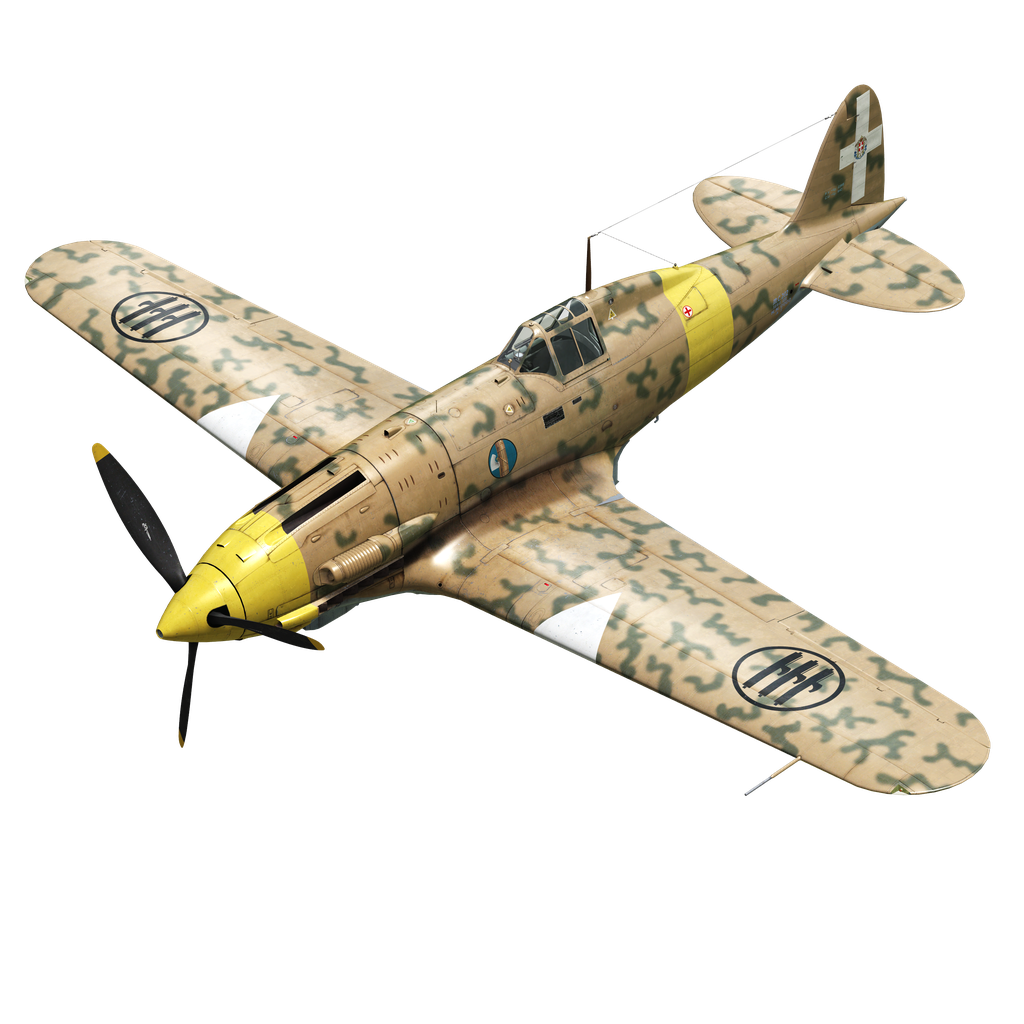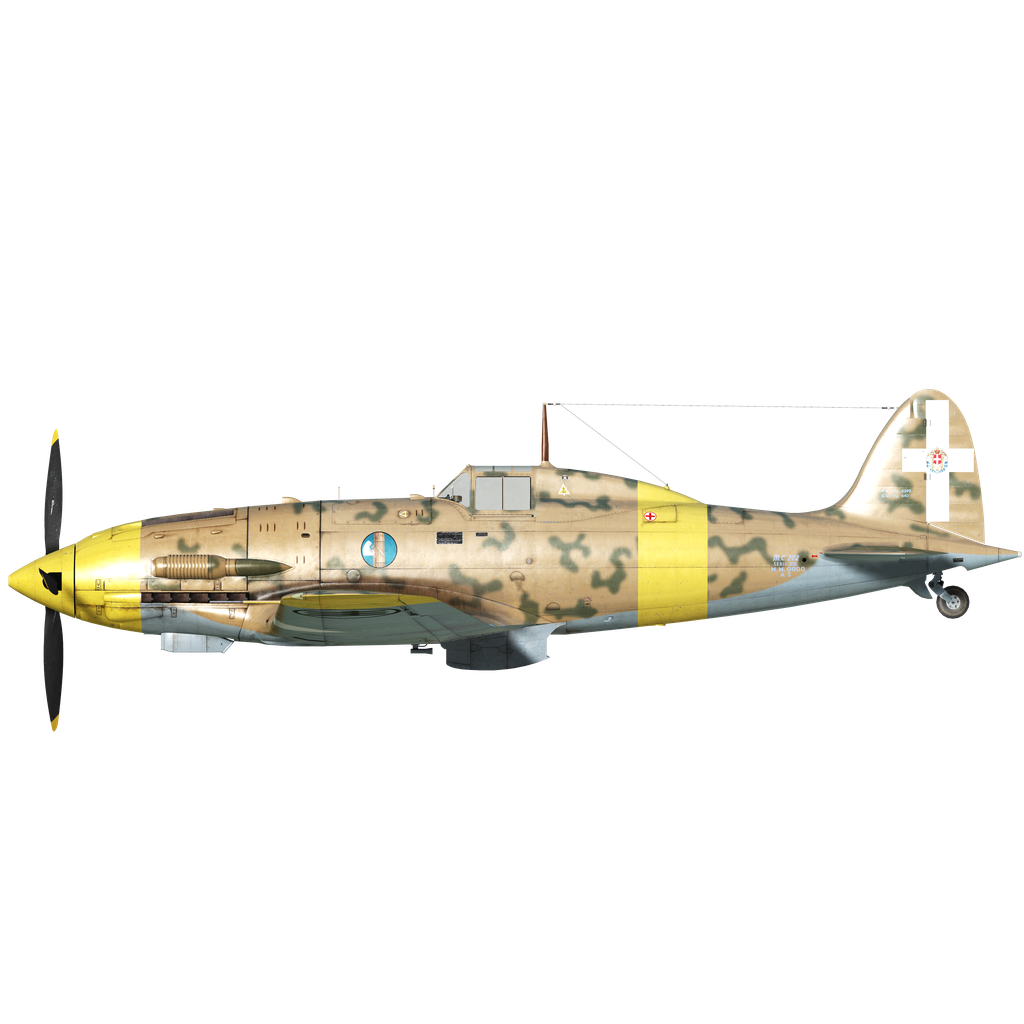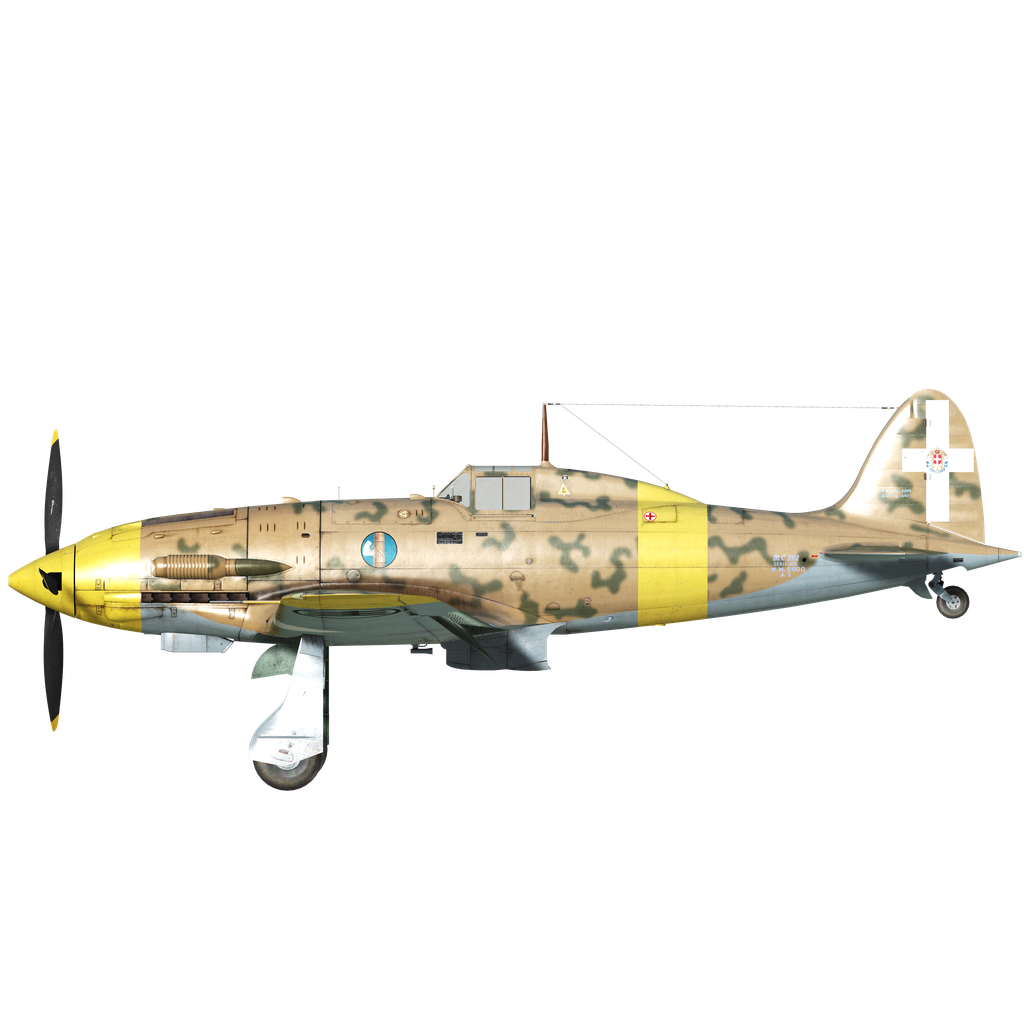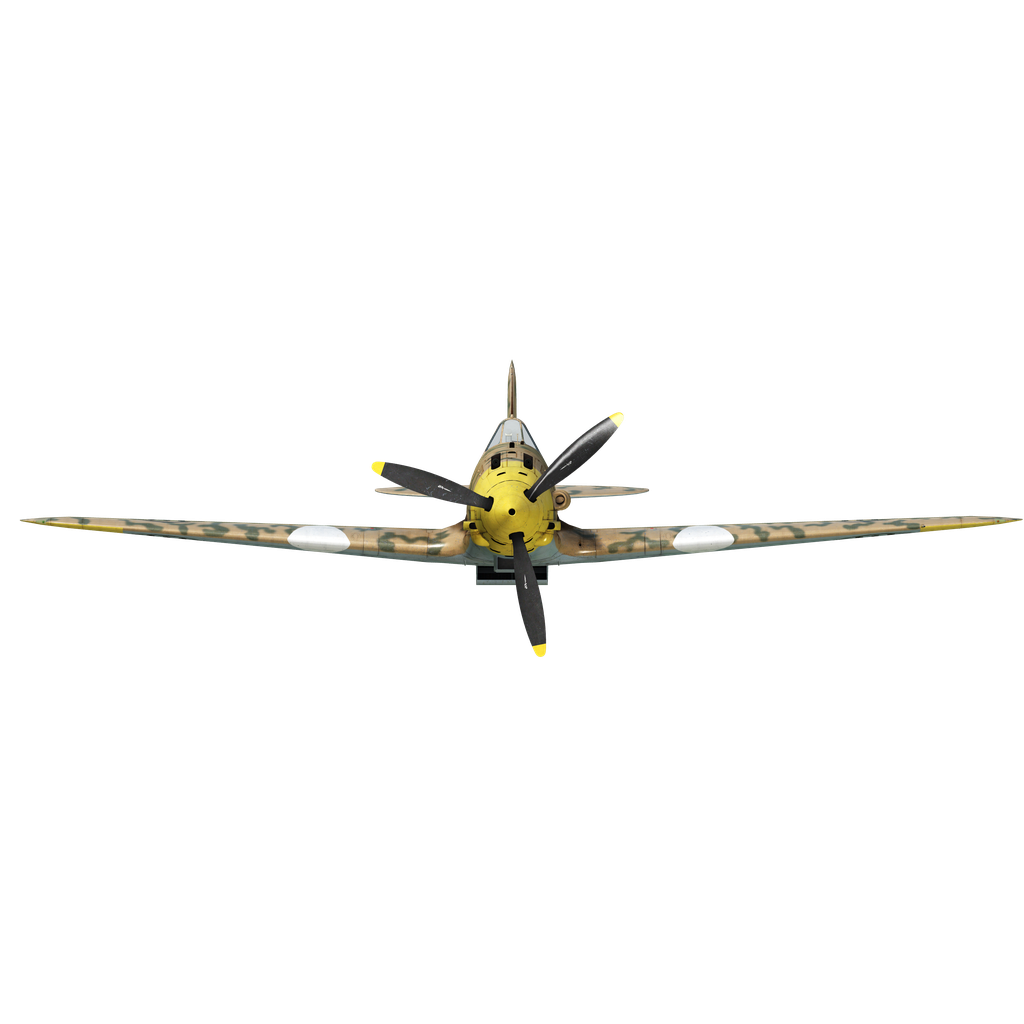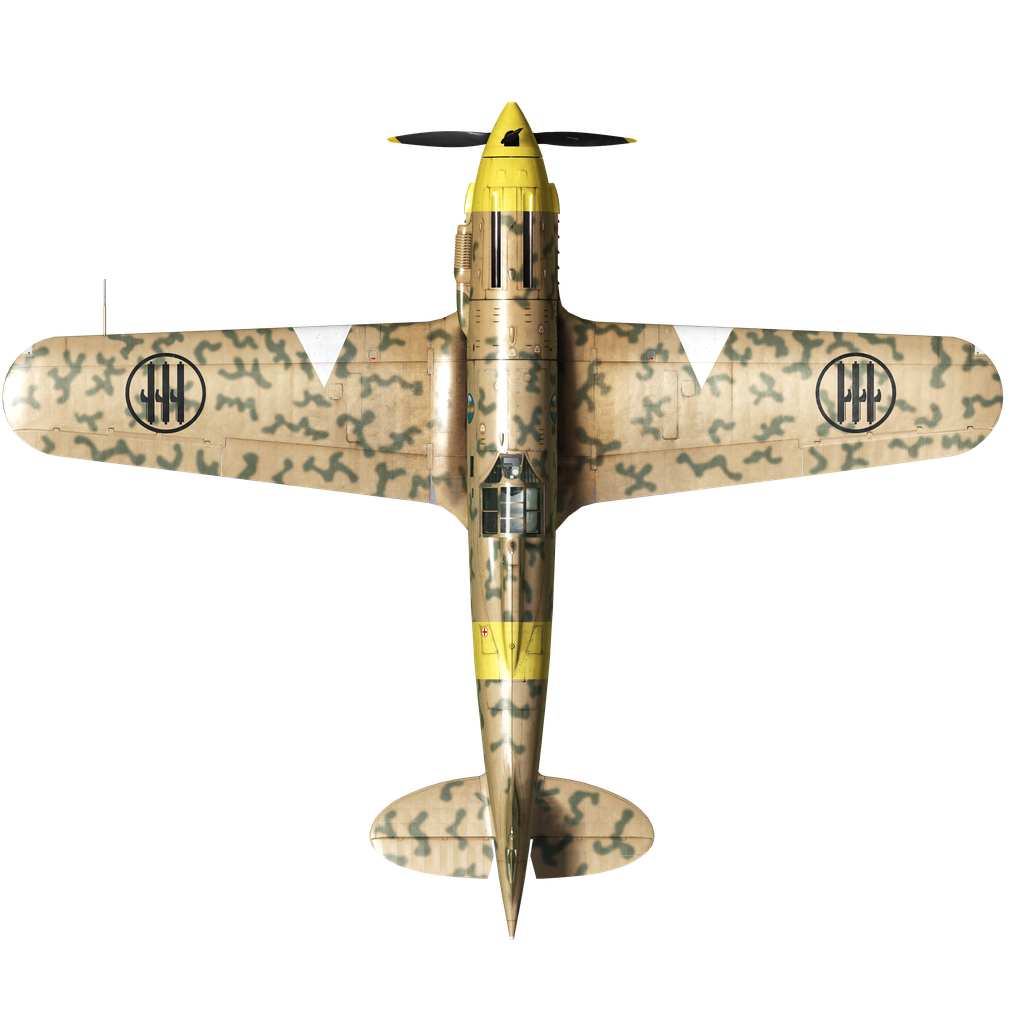The experience of combat operations in Spain led both the Italian and the Soviet command to the conclusion that it was necessary to rearm their air forces with more modern fighter models. In 1939, the Fiat CR.42 "Falco," Fiat G.50 "Freccia," and Macchi C.200 "Saetta" fighters, powered by the Fiat A.74 RC.38 air-cooled engine, went into production. However, the first air battles with the latest French and British fighters showed that these machines were inferior to their opponents in all characteristics: one of the reasons was a weak engine with high drag, and Italy did not yet produce water-cooled aircraft engines. Therefore, at the beginning of 1940, the "McKee" company bought a copy of the German Daimler-Benz DB 601 in-line engine, which had already been successfully used in the Bf 109 fighter. The company's chief designer Mario Castoldi and a group of engineers proactively developed a new fighter, designated M.C.202. The aircraft was developed based on the M.C.200 fighter, which was characterized by good controllability and manufacturability.
The M.C.202 "Folgore" ("Lightning") was an all-metal fighter-interceptor. The newly designed compact fuselage was aerodynamically clean. The solid construction of the fuselage and wings had smooth rivets on all surfaces and careful "sanding" of all surfaces. The power of the liquid-cooled Daimler-Benz DB 601 engine, produced under license by Alfa Romeo under the designation R.A.1000 RC41, was 1175 hp (1100 hp in combat mode at an altitude of 3700 m). The cooling of the engine was well thought out and included, besides water cooling with several water pumps, additional air intakes to supply air to the cylinder heads. The fighter had a closed cockpit canopy that opened to the side and a short upper rear dorsal spine that served as a headrest and roll cage. A unique feature of the aircraft was the asymmetric wing: to compensate for engine torque, the left wingtip was 21 cm longer than the right.
The aircraft of the VIII series differed from the first ones in terms of armament: in addition to two large-caliber machine guns in the nose of the fuselage, two more machine guns of rifle caliber were installed in the wings, starting with the VI series.
In 1942, 50 Series VIII aircraft were built, which began arriving at the front in June.
The "Folgore" was the first truly world-class fighter for the Royal Italian Air Force. Its excellent aerodynamics, high speed, and maneuverability, combined with excellent climb rate and pilot comfort, placed it among the best fighters of the early period of World War II. The M.C.202 saw action in Africa and in the skies over Malta, Sicily, and Italy.
In September 1942, 12 M.C.202s were sent to the USSR to replenish the Royal Italian Air Force units on the Eastern Front. They were part of the 21st Fighter Group, which was mainly armed with M.C.200s. The aircraft were evenly distributed among the squadrons. These units participated in the offensive of the Italian 8th Army towards the Don and in the defense of Stalingrad. The M.C.202s fought Soviet Yak and LaGG fighters and supported their troops with ground attack missions. Between August 1941 and January 1943 the M.C.200 and 202 flew a total of 6,361 sorties to gain air superiority, support troops and attack ground targets.
Sources used:
1. Gianni Cattaneo "The Macchi C.202" Aircraft Profile, 28 1965
2. "С. Kedrov "Macchi" - avid warriors (Italian fighters of Mario Castoldi)" Journal "Wings of the Motherland" 6 1999.
3. Materials of the site airwar.ru
